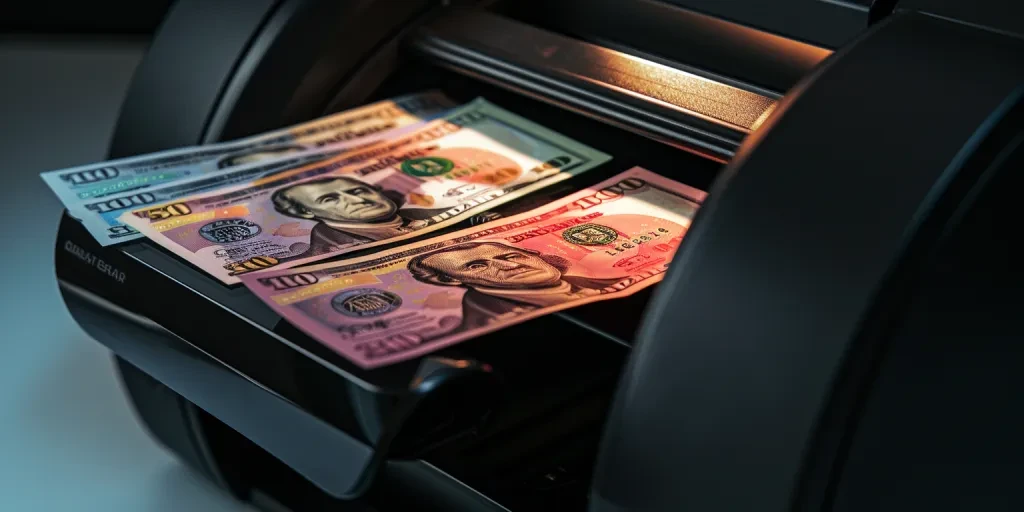In 2025, the demand for money counters has surged due to the rise in automated cash handling solutions. This article provides an in-depth analysis of the various types, performance metrics, and latest technology features that professional buyers need to consider. It offers valuable assistance for making informed purchasing decisions in the evolving money counter market.
Sommario:
– Money Counter Market Overview
– In-Depth Analysis of the Money Counter Market
– Essential Factors When Choosing a Money Counter
– Latest Technology Features in Money Counters
- Conclusione
Money Counter Market Overview
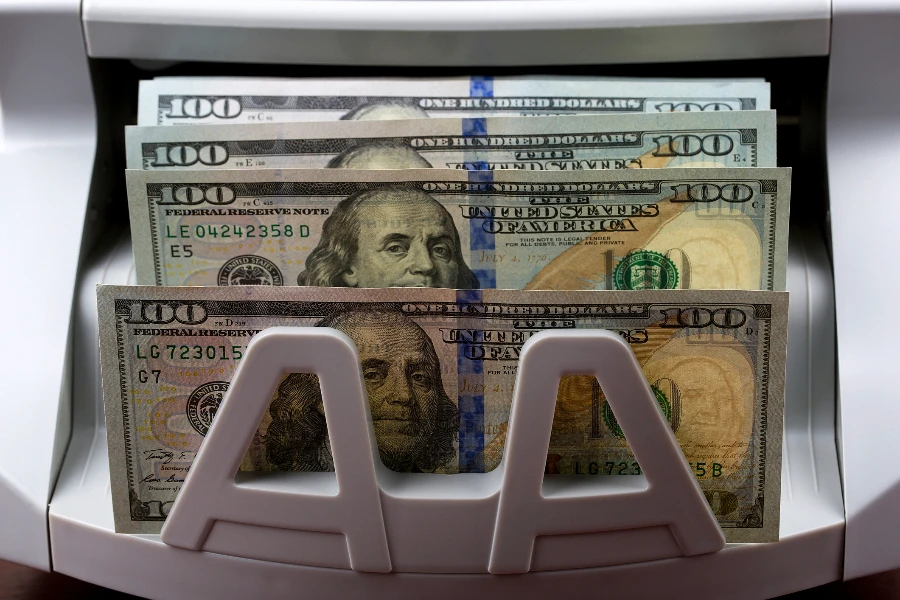
The global money counter market has shown significant growth due to the increasing need for efficient cash handling solutions across various sectors. In 2024, the market size was valued at approximately $1.2 billion, with an expected compound annual growth rate (CAGR) of 7.5% from 2024 to 2028. By 2028, the market is projected to reach $1.7 billion, reflecting the growing demand for automated cash handling systems.
North America held the largest market share in 2024, accounting for 35% of the global market. This dominance is due to the high adoption rate of advanced money counting machines in the banking and retail sectors. Europe followed with a 28% market share, driven by strict regulations on cash handling and anti-counterfeiting measures. The Asia-Pacific region is expected to witness the highest growth rate, with a CAGR of 8.2%, fueled by the expanding retail sector and increasing ATM installations in emerging economies like China and India.
The market is segmented into various types of money counters, including basic money counters, mixed denomination counters, and counterfeit detectors. Basic money counters dominated the market in 2024, with a 45% share, due to their affordability and wide usage in small businesses. However, mixed denomination counters are gaining traction, projected to grow at a CAGR of 8.1% as they offer advanced features like automatic denomination recognition and counterfeit detection.
In-Depth Analysis of the Money Counter Market
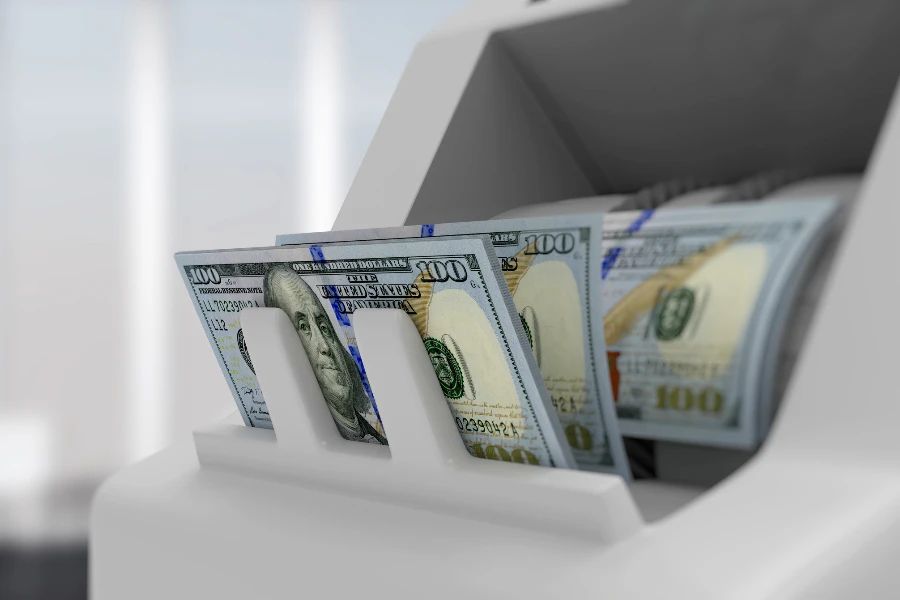
The money counter market is characterized by several key performance benchmarks and market share dynamics. Efficiency and accuracy are critical, with leading models achieving counting speeds of up to 1,500 bills per minute and error rates below 0.01%. Market leaders such as Glory Global Solutions and Cummins Allison hold over 40% of the market share due to their innovative products and robust customer support.
Economic factors significantly influence the money counter market. The rise in counterfeit currency activities has increased the demand for advanced counterfeit detection features in money counters. For example, in 2023, counterfeit currency activities in the Asia-Pacific region surged by 12%, prompting businesses to invest in sophisticated money counters with ultraviolet (UV), magnetic (MG), and infrared (IR) detection capabilities.
Consumer behavior is shifting towards automated solutions that enhance operational efficiency and reduce human error. Retailers and financial institutions are increasingly adopting digitalized money counters integrated with software solutions for real-time tracking and reporting. This trend is supported by the growing emphasis on digitalization and automation in cash handling processes.
Distribution channel preferences have evolved, with online sales channels gaining prominence. In 2024, online sales accounted for 30% of the market revenue, driven by the convenience of online shopping and the availability of a wide range of products. Traditional brick-and-mortar stores still hold a significant share, particularly in regions where digital adoption is slower.
Recent innovations in the money counter market include the integration of artificial intelligence (AI) and machine learning algorithms to enhance counterfeit detection accuracy and improve counting efficiency. Companies are also focusing on developing portable and battery-operated money counters to cater to the needs of small businesses and mobile operations.
The product lifecycle stages of money counters vary, with basic models reaching maturity while advanced models with AI and IoT capabilities are in the growth phase. Customer pain points such as high initial costs and maintenance requirements are being addressed through leasing options and extended warranties.
Brand positioning strategies in the money counter market emphasize reliability, accuracy, and advanced features. Differentiation strategies include offering customized solutions, superior after-sales service, and continuous product innovation. Niche markets, such as casinos and amusement parks, present opportunities for specialized money counting solutions tailored to their unique requirements.
Essential Factors When Choosing a Money Counter
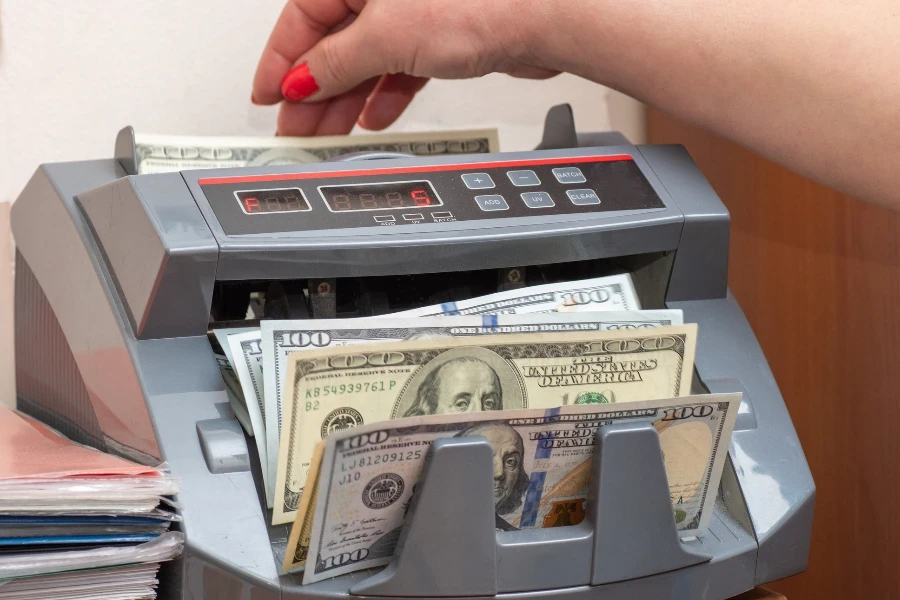
Types of Money Counters
Money counters come in various types, each designed to meet specific needs. The most common types include basic bill counters, mixed denomination counters, and counterfeit detection money counters. Basic bill counters are ideal for businesses that need to count large volumes of cash quickly. They lack advanced features but are cost-effective and efficient for straightforward counting tasks. Mixed denomination counters can count and sort bills of different denominations in a single pass, significantly reducing the time spent on manual counting and sorting. These counters use advanced sensors and software to identify and calculate the value of mixed bills accurately. Counterfeit detection money counters ensure the authenticity of the bills being counted by using detection methods such as ultraviolet (UV), magnetic (MG), and infrared (IR) to identify counterfeit bills. These counters are essential for businesses that handle large amounts of cash and need to minimize the risk of accepting counterfeit currency.
Prestazioni e velocità
The performance and speed of a money counter are critical factors to consider. The counting speed is usually measured in bills per minute (BPM), with most counters ranging from 600 to 1,500 BPM. High-speed counters are suitable for businesses with high cash volumes, as they can process large amounts of money quickly and efficiently. In addition to counting speed, the hopper capacity, which indicates the number of bills the machine can hold at once, is also important. A larger hopper capacity means fewer interruptions to reload bills, thus improving overall efficiency. Some advanced models also feature continuous feeding systems that allow for uninterrupted counting by automatically feeding bills into the hopper.
Funzionalità e caratteristiche
Modern money counters come with a variety of functionalities and features that enhance their usability and accuracy. Batch counting allows users to set a specific number of bills to be counted, making it easier to prepare deposits or cash drawers. Add mode enables the machine to keep a running total of multiple counts, which is useful for tallying large sums of money. Advanced models may include value counting, where the machine calculates the total monetary value of the bills counted. This feature is particularly useful for mixed denomination counters. Some counters also offer denomination sorting, where bills are separated into different stacks based on their denomination, further streamlining the counting process.
Qualità costruttiva e durata
The build quality and durability of a money counter are crucial for ensuring long-term reliability and performance. Machines constructed from high-quality materials such as stainless steel and durable plastics are more likely to withstand the wear and tear of daily use. Look for models with robust internal components, such as high-grade motors and sensors, which contribute to the machine’s longevity. Additionally, the design should facilitate easy maintenance and cleaning. Removable parts, such as hoppers and stackers, can simplify the cleaning process, preventing dust and debris from affecting the machine’s performance. Regular maintenance is essential for keeping the machine in optimal working condition and extending its lifespan.
Fascia di prezzo e budget
Money counters are available at various price points, ranging from budget-friendly models to high-end machines with advanced features. Basic bill counters can cost as little as $100, while mixed denomination and counterfeit detection counters can range from $500 to over $2,000. It’s important to consider your business’s specific needs and budget when selecting a money counter. Investing in a higher-end model with advanced features may be more cost-effective in the long run, as it can save time and reduce the risk of errors. However, for smaller businesses with lower cash volumes, a basic model may suffice. Evaluate the features and performance of different models to determine the best value for your investment.
Latest Technology Features in Money Counters
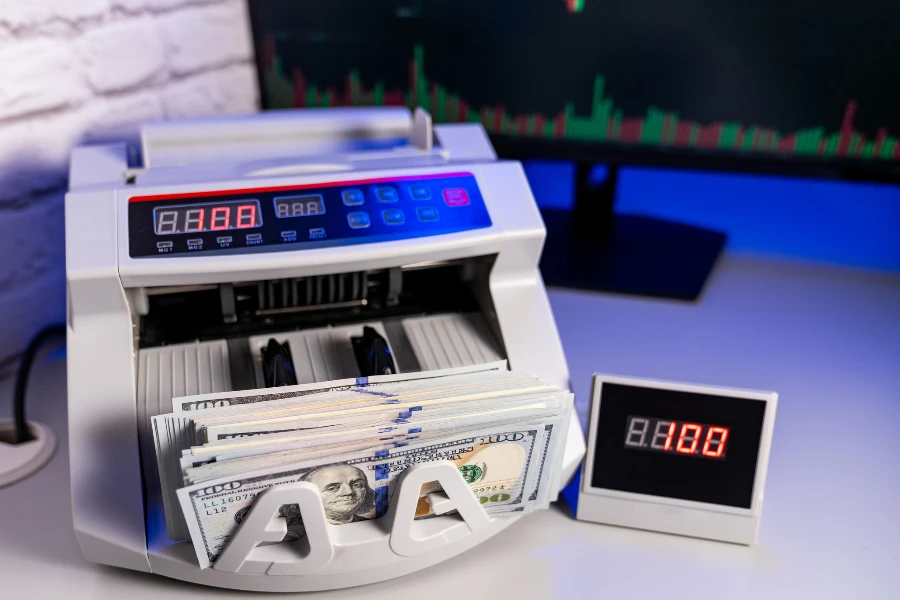
In recent years, money counters have seen significant advancements in technology, enhancing their efficiency and accuracy. One notable feature is the integration of artificial intelligence (AI) and machine learning algorithms. These technologies enable money counters to improve their counterfeit detection capabilities and adapt to new types of counterfeit bills. Connectivity options, such as USB and Wi-Fi, are also becoming more common in modern money counters. These features allow for easy software updates and integration with other systems, such as point-of-sale (POS) systems and accounting software. This connectivity ensures that the money counter remains up-to-date with the latest currency features and improves overall operational efficiency. Touchscreen interfaces are another technological advancement in money counters. These intuitive interfaces simplify the operation of the machine, allowing users to access various features and settings with ease. Touchscreens also provide real-time feedback and diagnostics, helping users identify and resolve issues quickly.
Conclusione
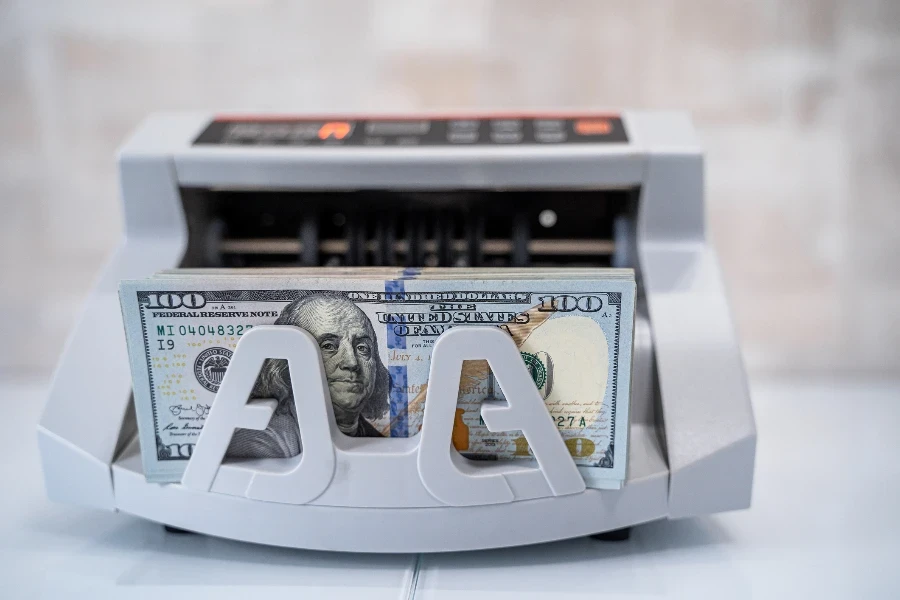
Selecting the right money counter for your business involves considering various factors, including the type of counter, performance, functionality, build quality, and price. By understanding the latest technology features and ensuring compliance with safety standards, you can make an informed decision that meets your business’s needs. Regular maintenance and proper setup will ensure that your money counter remains reliable and efficient, ultimately streamlining your cash handling processes.
